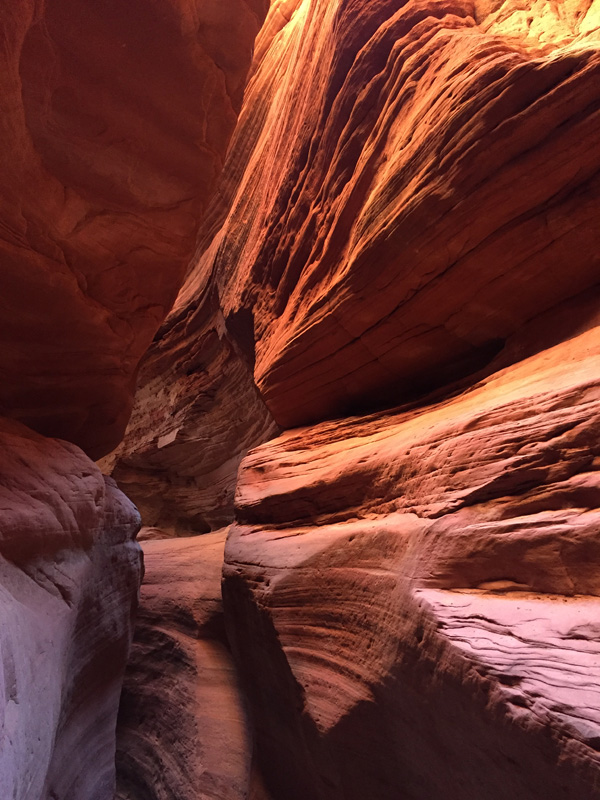

Several outstanding hikes, like Queens Garden, Navajo Trail, Fairyland Loop or Peek-a-boo Loop, take you deep into Bryce Canyon where true perspective helps you understand the size and beauty of these towering spires of orange and pink rock. Whereas in Zion, you tour through the canyon and gaze skyward at the red cliffs and rock formations, in Bryce, you drive along the rim and peer down into the canyon which has the world’s largest collection of colourful hoodoos. We actually look forward to one day experiencing how the white stuff we drive so far to avoid each year augments the ragged splendour of the multi-coloured pinnacles. At an elevation of between 8,000 and 9,000 feet (2,400-2,700 m), Bryce Canyon sees winter snow, which can arrive early and stay late.

The smallest of the five national parks in area, it does not disappoint by comparison. Travelling eastward, Bryce Canyon is the next national park and the second-most visited. The 360 degree views of Zion Canyon from the peak make the risks seem inconsequential we were standing on top of the world in utter reverence. Angel’s Landing is our favourite hike in Zion it’s also one of the most strenuous with over 1,500 feet (457 m) of elevation climb, but exhilarating with 1,000 foot (305 m) sheer cliffs on either side of the trail’s narrow ledges, ostensibly made safer with chains drilled into the rock walls or strung through metal posts. Zion has many areas that are impressive to see without hiking, like Checkerboard Mesa and the Towers of the Virgin, but we like to get out and touch the beauty. In 2015, Zion received the most visitors of the “Mighty Five” at over 3.6 million, with the least visited months being December and January. Zion is the western-most national park, near the city of St. Nevertheless, we do love the “Mighty Five” as the national parks are known each is so different from the other, and all are worthy of a visit.

While we have visited each of the five national parks several times, we prefer more remote, unfamiliar locations for their solitude. Off-season is the best time to visit if you want to escape the biggest crowds, say perhaps from December through February, although you’ll need to be prepared for cooler temperatures, possibly even snow. Today, millions of tourists descend on these breathtaking parks every year. During our first visit in 1987, these parks were busy, but not too crowded. The national parks have become more popular with travellers during the past 30 years. The vast majority of southern Utah is public lands administered by the National Park Service (NPS), the Bureau of Land Management (BLM), and the US Forestry Service (USFS), so the opportunities for exploring outstanding natural wonders are overwhelming. Southern Utah has five national parks, seven national monuments, a National Recreation Area and numerous historic sites and state parks. What an exhibition geology has created for us! Travelling through southern Utah’s extraordinary, irregularly-shaped rock formations, brightly stained with colourful minerals, causes us to contemplate our earth’s violent beginnings. This is the land of open blue skies and endless landscapes, of red sandstone, slot canyons, arches, buttes, natural bridges, native art and ancient cliff dwellings, and of the Milky Way radiating from horizon to horizon on moonless nights. It is easy to say that southern Utah is our favourite place to explore and hike, but it is almost impossible to select only one favourite destination in this high desert region of the Colorado Plateau.


 0 kommentar(er)
0 kommentar(er)
